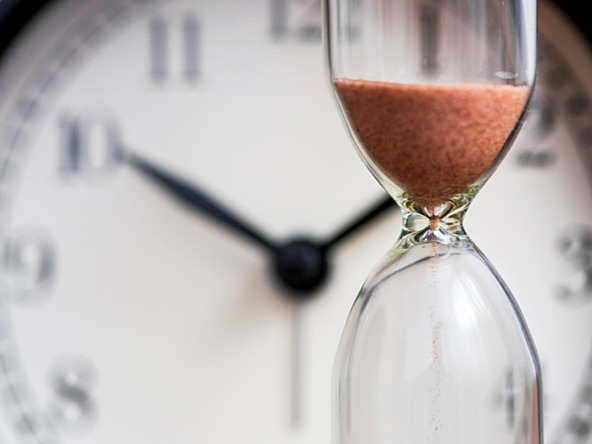Hit the brakes: why speed isn’t always what research needs

The 2021 GRIT Report says that time to insights is twice as important as the next client priority and triple the importance of an agency’s next priority. But innovation research that creates new ideas and informs business decisions doesn’t need speed. In fact, it needs the exact opposite.
Innovation research needs time
Our input to innovation is often fast idea testing and co-collaboration workshops. The issue is that people need time to think creatively. Time to ponder. Time to re-evaluate ideas and time to refine them. Or, as entrepreneur Ken Chester says, “time to get lost in the fog”. Do our current innovation research methods allow for this? I’d suggest not.
The opposite of allowing time is time-pressure – and time-pressure kills creativity. Psychologist Bridget Murray’s research shows this. Murray says that removing time to ponder different options reduces people’s chances of thinking creatively by 45%.
Less creative thinking equals weaker innovation. The implication of this is clear. By speeding up innovation, we’re reducing the inherent creativity.
Innovation needs unconscious thinking
Comic John Cleese states that intelligent unconsciousness spawns the best creative thinking. Our minds must be able to wander freely to trigger unconscious thinking. Why? Because we can't trigger unconscious thinking with conscious cues.
This means we can’t trigger unconscious thinking in high-paced workshops. Or in a survey. So how can we trigger it? Simple. We must give those involved in innovation research time to procrastinate in their own space.
Why? Because this is where unconscious thinking can occur and creative thinking will follow.
Yes, I said procrastinate. I know that procrastination isn’t the jazziest word in the marketing lexicon, but it can lead to great thinking. Just ask philosophy professor John Perry. His work on structured procrastination won a Nobel Prize in 2011.
Innovation needs a mix of moods
Behavioural scientists Daniel Kahneman, Oliver Sibony and Cass Sunstein identify a concept called ‘occasion noise’. This is when environmental context impacts how good a decision is. People’s mood is a big factor in creating occasion noise. Good moods are better for creativity. Bad moods are better for critiquing. Innovation needs both moods to succeed.
This has questions for who we collaborate with in innovation research. We need high-energy creatives and design progressives, but we also need the opposite type of people to critique ideas. Doing so reduces occasion noise. But who recruits critical mid-mood people for innovation research? I don’t and I doubt you do, but maybe it’s something we should consider.
The time of day also causes occasion noise. Stanford University professor of marketing Jonathan Levav’s well-known study shows judicial sentencing to be more lenient in the morning or after lunch. But occasion noise doesn’t only impact judges. Everyone’s brain is less creative when it’s tired. This poses the question – what’s more likely to spawn creative thinking: the 9am Tuesday workshop or the 4pm one on Thursday?
Innovation needs to think again
Compounding all the above is that innovation research usually involves asking people for their opinion on one occasion. But we can add more value to innovation if we use research methods that have multiple touchpoints. Why? Because the time between touchpoints will give those involved in the research the chance to reconsider and re-evaluate their ideas.
Organisational psychologist Adam Grant’s book, Think Again highlights the benefit of re-evaluating ideas. Grant cites a study that looked at 1,500 changed answers in an exam; of these, a quarter went from right to wrong, but half went from wrong to right.
The implication of this for researchers is clear. Changing your mind can lead to better solutions. So why don’t we allow for doing so in innovation research? Because we like immediate decisions and certainty. And we’re impatient. Very impatient.
But now isn’t always best. Forecasting expert Phillip Tetlock explains that being able to refine our thinking is a vital trait that allows us to predict the future. And who wouldn’t want their innovation ideas to be future-proof?
Innovation needs a change of scenery
Re-evaluating our thinking sounds easy. But how do we do it?
One way is by forcing a change of scenery between an initial decision and reviewing it again. This is because the environment we’re in affects our creativity. If our environment doesn’t change, then our thinking goes stale. Conversely, a change of environment can trigger new and more creative thoughts.
Even better is taking the time to re-evaluate your ideas in the environment they’ll eventually live in. An idea may sound amazing in your home office or agency meeting room, but it has to live in the real world. So what better place to go to re-evaluate that idea?
Where do we go from here?
It’d be silly to think that speed doesn’t matter at all. It does. But is having results for innovation research in 10 days instead of five, or 72 hours instead of 24, that much of a trade-off for the value that more creative thinking and better – more future-proofed – decisions can bring? Not in my opinion.
Let’s hit the brakes on innovation research and see if we can reap the benefits it brings. What’s the worst case scenario? It doesn’t work and we revert to the accelerator pedal again. And if being slower fails, that’s OK. Why? Because failure is what innovation is all about.
Jack Miles is a senior director at Northstar Research Partners.

We hope you enjoyed this article.
Research Live is published by MRS.
The Market Research Society (MRS) exists to promote and protect the research sector, showcasing how research delivers impact for businesses and government.
Members of MRS enjoy many benefits including tailoured policy guidance, discounts on training and conferences, and access to member-only content.
For example, there's an archive of winning case studies from over a decade of MRS Awards.
Find out more about the benefits of joining MRS here.












0 Comments